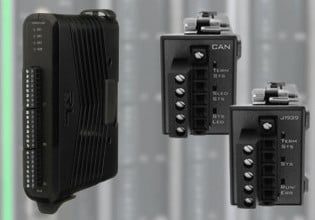M
One of the sites that I work at uses four GE frame 5 turbines with for power generation. The units were installed in 1971. The units were rebuilt in 1999 and Mark V controls were added. The site is un-manned when the units are not on-line, which is most of the time. The units are used mostly for summer peaking.
The units have the original hydraulic ratcheting means that sits atop the accessory wheel. On 5 different occasions during the 12 years that I have been maintaining the units, a hydraulic line or some other pressurized part of the ratcheting means has failed resulting in the spillage and subsequent clean-up of all the oil in the lube oil sump. This happens when the site is unmanned and the units are in the Cool-Down mode.
The site where the turbines are is 50 miles from the site I normally work at. I am trying to come-up with a means of controlling/limiting the oil spill as early in the spill as possible.
This is the scheme I am considering. Adding an additional liquid level detection device in the lube-oil sump, the original lube-oil level gauge has given trouble on several occasions on several of the units. I would like to install the new level detector in the access area where the high-pressure hydraulic oil pressure regulator is located. This area, with the access door that lifts, looks like a good location that would provide for easy installation/calibration/ maintenance of the device. I would like to set the level gauge to come into alarm state once the oil level drops an inch below the level that the current low level alarm comes into alarm state.
I would also like to install a RTD on or next to the aft turbine bearing. I would like to connect both devices to the Mark V and configure it so that if the new level gauge came into alarm state and the controls sensed the unit at zero rpm and the aft bearing temperature at a safe level then the controls would halt the cool-down process, The process would only resume if the aft turbine bearing temperature rose to unsafe levels. Once the bearing temperature of the aft turbine bearing had cooled to safe levels due to the resumption of lube oil flow then the cool-down process would be halted again. This would continue until someone arrived at the site and took steps to fix and issues with the unit.
Does this sound like something that would work? Are there any dangers to the unit that I might be over-looking? Is there a better way of accomplishing what I am trying to accomplish?
Thanks
Mark Allen
The units have the original hydraulic ratcheting means that sits atop the accessory wheel. On 5 different occasions during the 12 years that I have been maintaining the units, a hydraulic line or some other pressurized part of the ratcheting means has failed resulting in the spillage and subsequent clean-up of all the oil in the lube oil sump. This happens when the site is unmanned and the units are in the Cool-Down mode.
The site where the turbines are is 50 miles from the site I normally work at. I am trying to come-up with a means of controlling/limiting the oil spill as early in the spill as possible.
This is the scheme I am considering. Adding an additional liquid level detection device in the lube-oil sump, the original lube-oil level gauge has given trouble on several occasions on several of the units. I would like to install the new level detector in the access area where the high-pressure hydraulic oil pressure regulator is located. This area, with the access door that lifts, looks like a good location that would provide for easy installation/calibration/ maintenance of the device. I would like to set the level gauge to come into alarm state once the oil level drops an inch below the level that the current low level alarm comes into alarm state.
I would also like to install a RTD on or next to the aft turbine bearing. I would like to connect both devices to the Mark V and configure it so that if the new level gauge came into alarm state and the controls sensed the unit at zero rpm and the aft bearing temperature at a safe level then the controls would halt the cool-down process, The process would only resume if the aft turbine bearing temperature rose to unsafe levels. Once the bearing temperature of the aft turbine bearing had cooled to safe levels due to the resumption of lube oil flow then the cool-down process would be halted again. This would continue until someone arrived at the site and took steps to fix and issues with the unit.
Does this sound like something that would work? Are there any dangers to the unit that I might be over-looking? Is there a better way of accomplishing what I am trying to accomplish?
Thanks
Mark Allen






